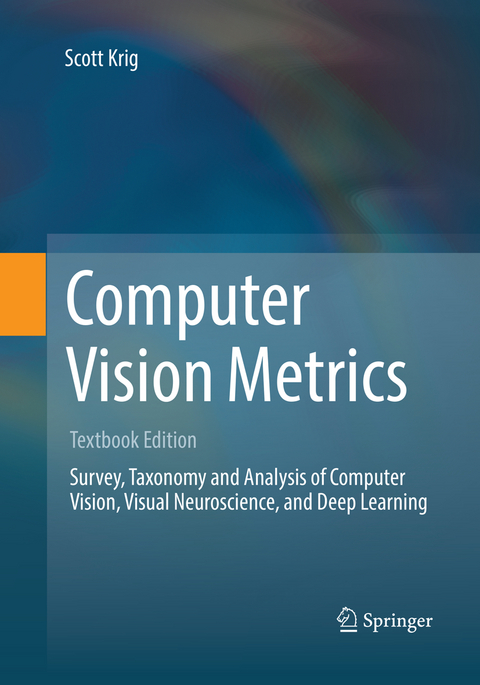
Computer Vision Metrics
Springer International Publishing (Verlag)
978-3-319-81595-4 (ISBN)
To complement the survey, the textbook includes useful analyses which provide insight into the goals of various methods, why they work, and how they may be optimized.
The text delivers an essential survey and a valuable taxonomy, thus providing a key learning tool for students, researchers and engineers, to supplement the many effective hands-on resources and open source projects, such as OpenCV and other imaging and deep learning tools.
Scott Krig is a pioneer in computer imaging, computer vision, and graphics visualization. He founded Krig Research in 1988, providing the world's first image and vision systems based on high-performance engineering workstations, super-computers, and dedicated imaging hardware, serving customers worldwide in 25 countries. Scott has provided imaging and vision solutions around the globe, and has worked closely with many industries including aerospace, military, intelligence, law enforcement, government research, and academic organizations. More recently, Scott has worked for major corporations and startups serving commercial markets, solving problems in the areas of computer vision, imaging, graphics, visualization, robotics, process control, industrial automation, computer security, cryptography, and consumer applications of imaging and machine vision to PCs, laptops, mobile phones, and tablets. Most recently, he provided direction for Intel Corporation in the area of depth-sensing and computer vision methods for embedded systems and mobile platforms. Scott is the author of many patent applications worldwide in the areas of embedded systems, imaging, computer vision, DRM, and computer security, and studied at Stanford.
Image Capture and Representation.- Image Re-processing.- Global and Regional Features.- Local Feature Design Concepts.- Taxonomy of Feature Description Attributes.- Interest Point Detector and Feature Descriptor Survey.- Ground Truth Data, Content, Metrics, and Analysis.- Vision Pipeline and Optimizations.- Feature Learning Architecture Taxonomy and Neuroscience Background.- Feature Learning and Deep Learning Architecture Survey.
| Erscheinungsdatum | 05.03.2022 |
|---|---|
| Zusatzinfo | XVIII, 637 p. 331 illus., 139 illus. in color. |
| Verlagsort | Cham |
| Sprache | englisch |
| Maße | 178 x 254 mm |
| Gewicht | 1230 g |
| Themenwelt | Informatik ► Theorie / Studium ► Künstliche Intelligenz / Robotik |
| Schlagworte | 3D Reconstruction • CNN • computational imaging • Computational Neuroscience • Computer Engineering • computer vision • convolutional neural networks • Deep learning • deep neural networks • DNN • Feature Descriptors • Feature learning • Image Processing • Neural networks • Signal Processing |
| ISBN-10 | 3-319-81595-4 / 3319815954 |
| ISBN-13 | 978-3-319-81595-4 / 9783319815954 |
| Zustand | Neuware |
| Haben Sie eine Frage zum Produkt? |
aus dem Bereich


